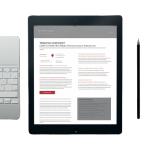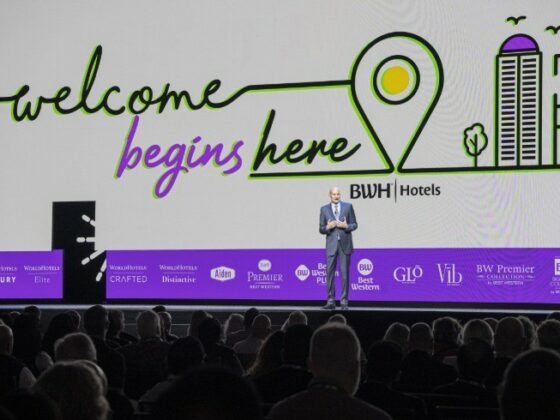
The HCMI standard for per night emissions includes electricity, gas, refrigerant gases and laundry services, and is used by more than 30,000 hospitality operators including Hyatt, Marriott International and Scandic.
Bob’s LEGIT takes additional factors into consideration, including the environmental impact of construction materials, cleaning services, toiletries, food and drink consumables, waste and water and furnishings.
HCMI has been widely praised for helping operators take a vital first step in carbon measurement. However, Niko Karstikko, Bob W’s co-founder and CEO, wants operators to go further by using more comprehensive measurement standards and is calling for greater transparency in sharing environmental performance to both guests and the wider industry.
When applied to Bob W’s portfolio, the new more accurate methodology calculated an average carbon footprint 419% higher than the HCMI estimate – a five-fold increase.[1] This stark difference was driven by the inclusion of significantly more supplier-contributed indirect emissions.
Bob W’s Koti Katajanokka building in Finland, for example, recorded an average of 1.48 kilograms of CO₂ equivalent per night (kgCO₂e/night) using the HCMI methodology. However, when the new model was applied, the figure rocketed to 19.7 kgCO₂e/night.
Key factors like room rates and amenities have long played a pivotal role in guiding guest decisions when browsing property listings. By incorporating LEGIT per guest night emissions metrics into each of its property listings, Bob W guests are empowered to make informed and sustainable choices about their accommodation.
While the new tool represents a major milestone in understanding the full environmental impact of the hotel sector, it also carries serious implications for how the industry currently gauges and mitigates its carbon footprint.
Niko Karstikko, Co-founder and CEO of Bob W, said: “The emerging generation of travellers demands more transparency and is tired of greenwashing. The lodging industry owes it to its guests to give the numbers upfront and our aim is to make per-night guest emissions as prominent as nutrition facts on the back of a cereal packet.
“Our work with Furthr suggests the true scale of the hotel sector’s environmental impact has been vastly underestimated. For an industry that accounts for approximately 9% of global carbon emissions,[2] there can be no room for guesswork when it comes to assessing its true contribution.
“The disparity between our new methodology and others raises critical questions about the effectiveness of current sustainability strategies within the sector. Many operators could well be falling shorter than they realise in addressing the full scope of their emissions, especially indirect sources.
“Among the pool of big, big hotel and hospitality players, we’re a relatively small challenger brand. So, if we are able to identify and measure our actual impact on the planet, then so too can others.
“We may not have all the answers, but we remain committed to being the most honest operator in the industry and are working hard to empower our guests to make informed decisions. We’re eager to hear feedback from other operators about our new LEGIT methodology and invite open dialogue to refine and enhance it together. Collaboration is key to evolving this initiative into something truly impactful for the entire industry.”
Bob W’s latest Sustainability Report provides a detailed assessment of the operator’s greenhouse gas (GHG) emissions for its entire portfolio in 2023. It highlights a total carbon footprint of 4,489 tonnes of carbon dioxide equivalent (tCO₂e) – a 90% increase in 2022, driven by the rapid expansion of Bob W’s portfolio, which grew by around 200% during that same period.
Bow W is a leader in sustainable hospitality having become the first international climate-neutral hospitality provider in 2021. The operator offsets 100% of its operational emissions, prioritises renewable energy sources and has committed to becoming a net-zero business by 2050.
Paul Dunca, chief operating officer at Furthr, said: “Tools like HCMI have provided a strong foundation for measuring operational emissions, helping many operators take their first steps toward sustainability. By introducing standardised sustainability reporting, HCMI empowered hospitality businesses and established a centralised system to drive meaningful progress.
“However, as our understanding of the hospitality industry’s true impact on the planet continues to evolve, it becomes increasingly clear that there is much more work to be done.
“By adopting advanced measurement methods, the industry can develop a fuller, more accurate picture of its environmental impact, and then take meaningful steps towards achieving its sustainability goals.”
“It’s rare to see a team like Bob W’s. They already had sustainability baked into their ethos, and now they’ve taken it to the next level by formalising their net zero strategy. We worked closely with them to push for better data accuracy, streamline reporting, and align with the highest standards, giving them a clear foundation to achieve their bold vision.”
References:
[1] This weighted percentage has been calculated according to floor area by taking the average difference between Bob W’s carbon footprint using the HCMI methodology and Bob W and Furthr’s new LEGIT tool.







